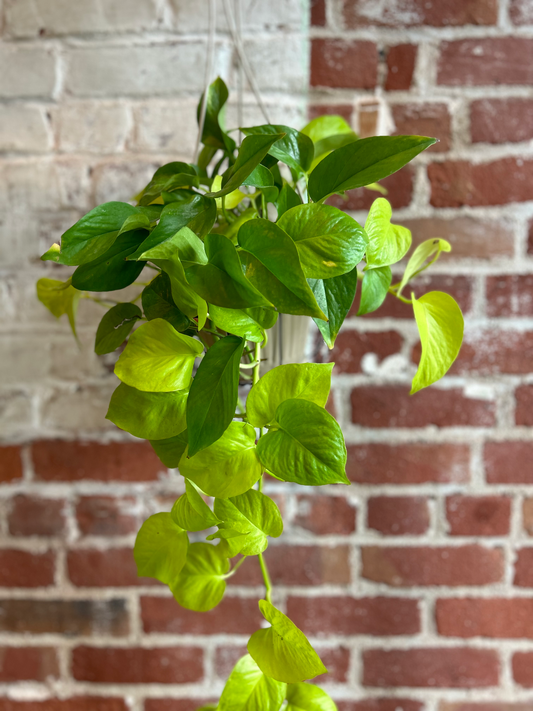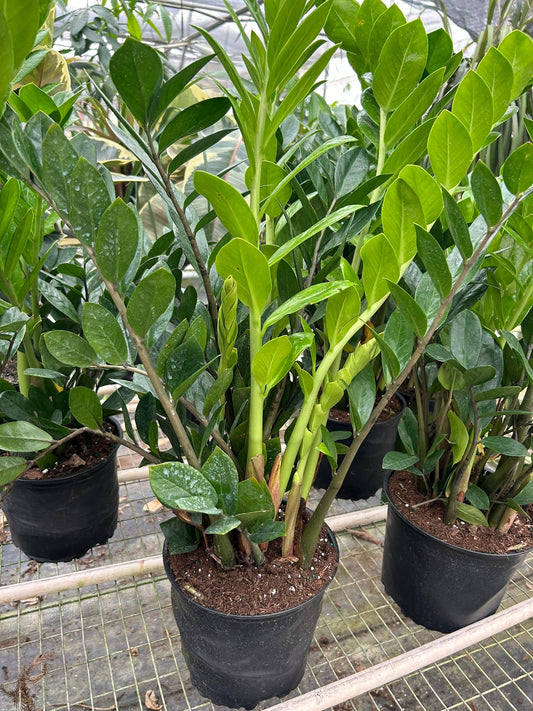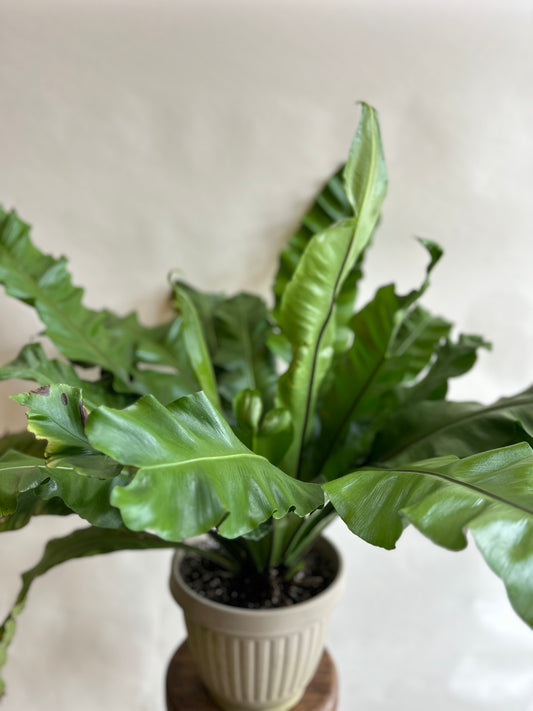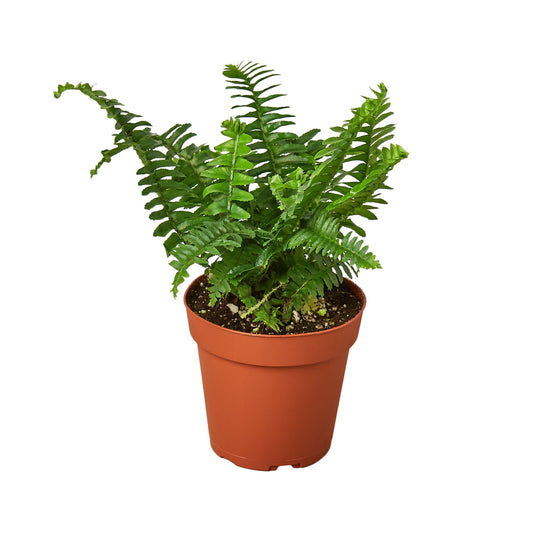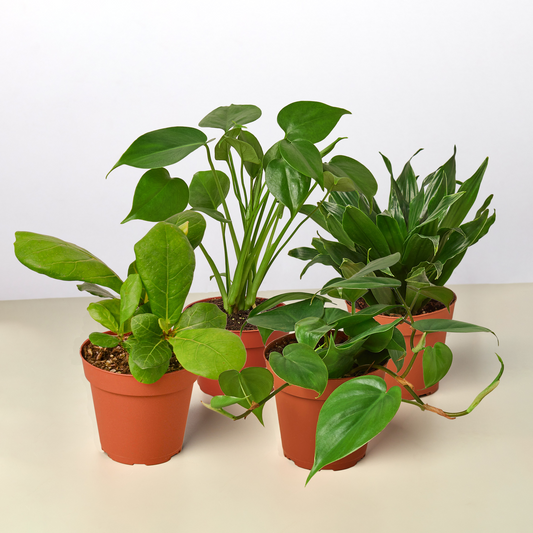Do You Need a Moss Pole For a Prayer Plant?
Cafe Planta Team
Houseplants have a knack for transforming spaces, don't they? Whether you're a seasoned plant lover or just starting your green journey, you might have come across the idea of using moss poles. But when it comes to a prayer plant, also known as a Maranta, is a moss pole really necessary?
In this article, we'll chat about what makes a prayer plant unique, the role of moss poles, how these poles can (or can't) benefit your leafy friend, and some other tips and tricks for keeping your prayer plant thriving. So, let's get started and see whether your prayer plant is pining for a pole or perfectly happy without one.
Getting to Know the Prayer Plant
Before we ponder the moss pole question, it’s helpful to understand what makes a prayer plant tick. The prayer plant, belonging to the Marantaceae family, is cherished for its striking foliage. The leaves are usually oval, boasting vivid colors and unique patterns that can make anyone stop and stare.
What’s really fascinating about prayer plants is their movement. These plants have a daily rhythm, folding their leaves up at night like hands in prayer—hence the name. During the day, the leaves open up again to soak in the light. This movement isn’t just for aesthetics; it’s also a response to changes in light and temperature, helping the plant optimize its photosynthesis process.
In terms of growth, prayer plants are naturally low-growing and spread horizontally rather than climbing vertically. They typically prefer to sprawl along the ground in their native environments, which makes them a bit different from your average climbing plant that might snuggle up to a moss pole.
What Exactly Is a Moss Pole?
A moss pole is essentially a vertical structure covered in sphagnum moss, designed to support climbing plants as they grow. The moss retains moisture, which can benefit plants, and provides a surface for aerial roots to grasp onto. Moss poles help plants like monsteras and philodendrons achieve a more natural growth pattern, as these species are inclined to climb in their native habitats.
Using a moss pole can guide a plant upward, encouraging it to grow taller and lusher. The moist moss can also contribute to a humid microenvironment, which many tropical plants adore. However, not all plants naturally seek out vertical growth, and that’s where the question of the prayer plant comes into play.
Prayer plants, by nature, aren't climbers. They’re more of a ground cover kind of plant, spreading their leaves outwards in a delightful display. This horizontal growth habit means they typically don’t need the vertical support that a moss pole provides. But could there be exceptions? Let’s explore further.
Do Prayer Plants Need Moss Poles?
Given the prayer plant's tendency to spread rather than climb, you might wonder if a moss pole is even necessary. The short answer is usually no. Prayer plants naturally grow low to the ground and don’t have the climbing instincts of other tropical plants. However, that doesn't mean a moss pole is completely out of the question.
While prayer plants won’t actively climb a moss pole, some plant parents have found creative ways to use moss poles with them. For instance, if your prayer plant is getting a bit leggy or sprawling too much for your liking, the moss pole can act as a stake to provide some structure.
It’s also possible to use a moss pole to create a more decorative or artistic display. Some plant parents use the pole as a centerpiece, arranging the prayer plant around it to create a focal point in their plant collection. Just remember, the moss pole here is more for aesthetics than necessity.
Alternatives to Moss Poles for Prayer Plants
If a moss pole doesn’t seem like the right fit, there are other options for supporting your prayer plant’s growth. Here are a few alternatives:
- Trailing: Allow your prayer plant to trail from a shelf or hanging basket. This can create a lush, cascading effect that highlights its natural growth pattern.
- Pruning: Regular pruning can help manage the plant’s shape, encouraging fuller growth and preventing it from becoming too leggy.
- Horizontal Training: Use small stakes or trellises to guide the plant horizontally. This can create a pleasing, structured look while keeping the plant close to its natural growth habits.
- Pebble Tray: Instead of a moss pole, use a pebble tray underneath your plant to maintain humidity, which is often more beneficial than vertical support.
These methods not only respect the prayer plant’s natural inclination but also offer ways to showcase its beautiful leaves without forcing it into a climbing role it might not take to naturally.
Creating the Perfect Environment for Your Prayer Plant
While we're on the topic of keeping your prayer plant happy, let's chat about its preferred environment. These plants hail from tropical regions, so they thrive in conditions that mimic their native habitat. Here’s a quick rundown:
- Light: Bright, indirect light is best. Direct sunlight can scorch the leaves, while too little light can cause them to lose their vibrant colors.
- Humidity: High humidity is a favorite of the prayer plant. Regular misting or using a humidifier can help keep the air moist.
- Soil: A well-draining potting mix is crucial. Too much moisture can lead to root rot, so ensure your soil is light and airy.
- Watering: Keep the soil consistently moist, but not waterlogged. Water when the top of the soil feels dry to the touch.
By focusing on these key elements, your prayer plant will have everything it needs to flourish, with or without a moss pole.
Common Challenges with Prayer Plants
Like any plant, prayer plants can face their share of challenges. Here are some common issues and what you can do about them:
- Curling Leaves: This can indicate low humidity or underwatering. Try increasing humidity around your plant and ensure it's getting enough water.
- Yellowing Leaves: Often a sign of overwatering. Check your watering schedule and make sure the plant isn't sitting in waterlogged soil.
- Pests: Spider mites and mealybugs are occasional visitors. Regularly check your plant for signs of pests and treat them promptly with insecticidal soap or neem oil.
Being proactive and observant can go a long way in keeping your prayer plant healthy and vibrant.
Decorating with Prayer Plants
Prayer plants are a dream when it comes to interior design. Their bold patterns and colors make them a standout piece in any room. Here are some ways to use prayer plants in your home decor:
- Table Centerpiece: Place your prayer plant in a decorative pot and use it as a centerpiece on a dining or coffee table.
- Bookshelves: Add a pop of color to bookshelves by placing a prayer plant among your favorite reads and knick-knacks.
- Hanging Displays: Use hanging planters to let your prayer plant cascade down, adding vertical interest to a room.
- Terrariums: Create a mini tropical forest by incorporating a prayer plant into a larger terrarium setup.
With a little creativity, your prayer plant can become a natural masterpiece in your home.
Propagating Prayer Plants
If you're eager to expand your prayer plant collection, propagation is a fun and rewarding way to do it. The most common method for propagating prayer plants is through stem cuttings. Here’s how:
- Choose a Healthy Stem: Pick a stem with at least three leaves and make a clean cut just below a node.
- Prepare the Cutting: Remove the lower leaves, leaving a couple at the top.
- Root the Cutting: Place the cutting in a jar of water, ensuring the node is submerged. Change the water every few days to keep it fresh.
- Transplant: Once roots are a couple of inches long, plant the cutting in a small pot with fresh, well-draining soil.
With a bit of patience, you'll soon have a new prayer plant ready to join your indoor jungle.
Final Thoughts
To wrap things up, while prayer plants don't need a moss pole, they’re incredibly versatile and can thrive with a little creativity and care. Whether you let them trail, stake them for support, or simply let them spread naturally, these plants will reward you with their stunning foliage and intriguing movements.
At Cafe Planta, we're passionate about helping you care for your plants. Whether you're looking for new leafy additions or need advice on plant care, we're here to support you. Feel free to reach out via email or connect with us on Instagram. Let's grow together!


